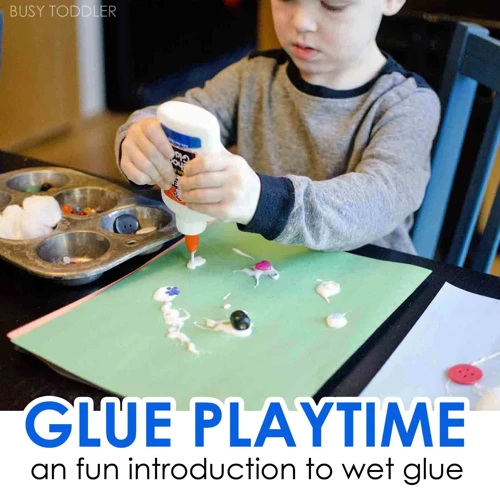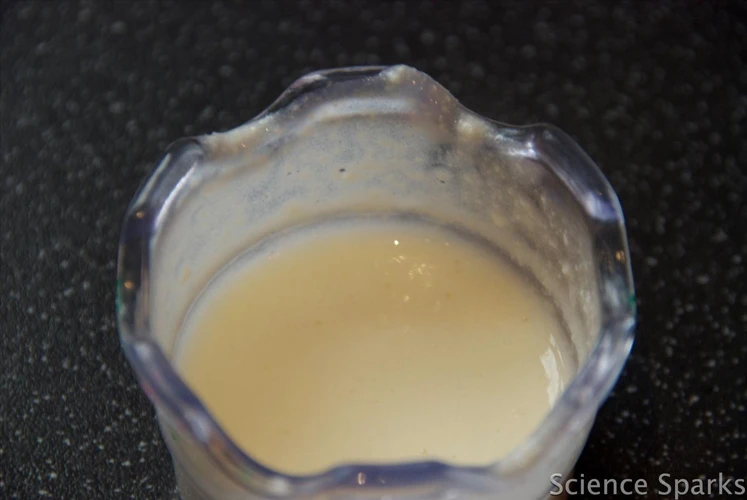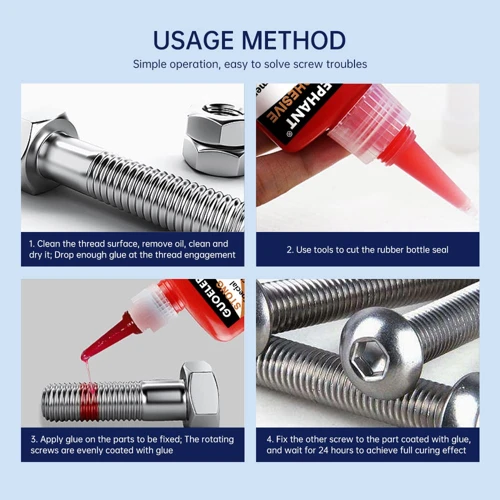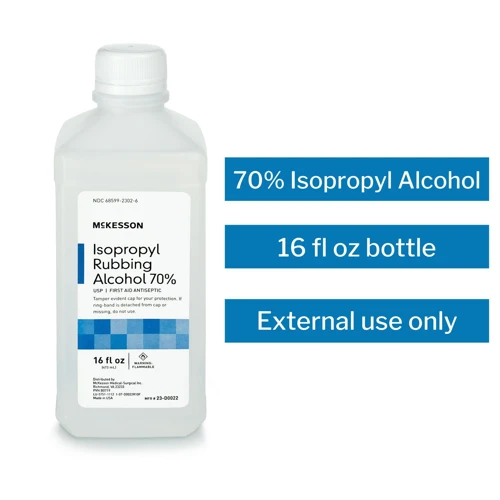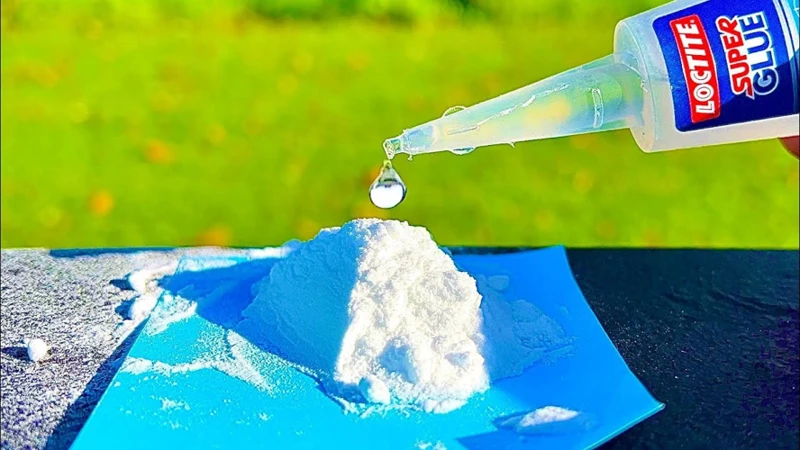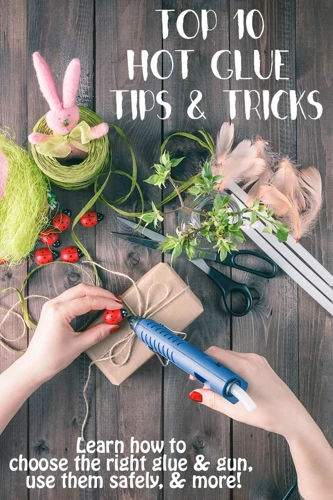Introduction
Label glue can be a stubborn and irritating substance to deal with. Whether you’re trying to remove a label from a new product or get rid of the residue left from an old one, it can often seem like an impossible task. However, fear not, for there are a number of effective methods for removing label glue that you can try. In this guide, we’ll walk you through some of the best techniques for removing label glue step-by-step, using common household items and a little bit of elbow grease. So roll up your sleeves and let’s get started!
Explain why label glue is a pain to remove
Label glue can be a major hassle to remove from surfaces. The glue is designed to bond materials together, so it is meant to be strong and long-lasting.
When labels are removed, it is common to find a sticky residue left behind that is difficult to eliminate. This is because the glue has seeped into the surface and adhered to it. Even if the label is removed soon after it has been applied, there may still be some residual adhesive left behind.
What’s more, label glue can also be quite messy, and if it is not removed properly, it can leave a greasy film on the surface of the object. Removing this stickiness can be frustrating and requires a bit of elbow grease, but with the right tools and techniques, it can be tackled successfully.
It’s important to note that different types of glue require different methods of removal. For instance, removing super glue from skin requires a different approach than removing decal glue from car paint. Be sure to identify the type of glue before attempting to remove it. In this article, we’ll focus on removing label glue from common surfaces in your home or office environment using methods that are safe and effective.
Provide some context about where labels are commonly found
Labels are a part of our daily lives, and they are found almost everywhere – from household items to personal care products. They are generally used to convey important information, such as product ingredients, usage instructions, expiry dates, and more. Labels come in different types, sizes, and adhesive strengths, depending on the surface and the product they are meant for. Here are some common places where labels are found:
| Location | Examples of Labels |
|---|---|
| Food and Beverage Products | Product names, Nutrition Facts, Expiry dates, Ingredient lists, Barcodes |
| Personal Care Products | Shampoo bottles, Makeup containers, Nail polish, Perfume bottles, Hair care products |
| Household Products | Cleaning products, Detergent bottles, Stationary items, Tools, Electronic gadgets |
| Clothing and Apparel | Price tags, Size stickers, Brand labels, Care labels |
| Medical and Pharmaceutical Products | Prescription labels, Over-the-counter medication labels, Dosage instructions |
Despite the benefits of having labels, they can be tough to remove, leaving behind sticky residue that can easily attract dirt and grime or interfere with the product’s visual appeal. However, there are several methods that can help you get rid of label glue with ease. Check out the following methods to learn how to remove label glue effectively.
If you are struggling with removing super glue from your skin, check out our article on petroleum jelly and other methods to remove super glue from skin.
Method 1: Vinegar
If you’re struggling to remove stubborn label glue, vinegar might just do the trick. This versatile household item can be found in almost any kitchen and used for various cleaning purposes. Vinegar’s acidity can break down the glue’s grip, making it easier to remove. So, let’s take a look at what you’ll need and step-by-step instructions for using vinegar to remove label glue. And if you’re dealing with a different type of glue, such as Impress Nail Glue or Black Mastic Glue, be sure to check out our other articles linked below!
What you’ll need
To successfully remove label glue, you’ll need a few items depending on which method you choose. Here are the supplies you’ll need for each method:
Method 1: Vinegar
- White vinegar
- Bowl or container
- Cloth or paper towel
Method 2: Oil
- Cooking oil (vegetable or olive oil)
- Cloth or paper towel
Method 3: Rubbing Alcohol
- Rubbing alcohol
- Cloth or paper towel
Method 4: Baking Soda
- Baking soda
- Water
- Bowl or container
- Cloth or sponge
Method 5: Goo Gone
- Goo Gone
- Cloth or paper towel
It is important to note that some methods require specific safety precautions, such as handling chemicals. Always follow the instructions on the packaging and any additional safety warnings. If you need to remove glue from a specific item, such as impress nail glue or black mastic glue, follow our guide on how to remove impress nail glue or how to remove black mastic glue respectively.
Step-by-step instructions
For this section, we will go through the step-by-step instructions for each of the five methods that can be used to remove label glue from surfaces.
| Method | What You’ll Need | Step-by-Step Instructions |
|---|---|---|
| Vinegar | White vinegar, a cloth, and warm water |
|
| Oil | Cooking oil, dish soap, and hot water |
|
| Rubbing Alcohol | Rubbing alcohol and a cloth |
|
| Baking Soda | Baking soda and cooking oil |
|
| Goo Gone | Goo Gone and a cloth |
|
Additionally, if you are unsure about any of these methods or feel like you need more information, there are plenty of online resources available to help you with what removes glue and specific types of adhesives. Some relevant articles include how to remove Mitre Bond glue, how to remove eye glue, how to remove decal glue from car paint, how to remove Ebin lace glue, how to remove super glue from miniatures, and how to remove super glue from a metal lock.
Method 2: Oil
Are you struggling to remove pesky label glue residue from surfaces and objects in your home? Luckily, there are multiple solutions to this common problem. One such method involves using oil to break down the adhesive. This approach can be particularly useful for removing label residue from glass or plastic surfaces without causing damage. In this section, we will walk you through the necessary tools and step-by-step instructions to make oil-based label removal a breeze.
What you’ll need
To successfully remove label glue, you’ll need a few supplies depending on which method you choose to use. Here’s a breakdown of what you’ll need for each method:
Vinegar Method:
- White vinegar
- Clean cloth or sponge
- Bowl or container
- Warm water
Oil Method:
- Cooking oil (olive, vegetable, sunflower, etc.)
- Clean cloth or sponge
- Bowl or container
- Dish soap
- Warm water
Rubbing Alcohol Method:
- Rubbing alcohol (at least 70% concentration)
- Clean cloth or sponge
- Bowl or container
- Cotton balls or swabs (optional)
Baking Soda Method:
- Baking soda
- Clean cloth or sponge
- Bowl or container
- Warm water
Goo Gone Method:
- Goo Gone (or similar adhesive remover)
- Clean cloth or sponge
- Bowl or container
- Dish soap
- Warm water
Make sure to have all these supplies nearby before you begin removing label glue.
Step-by-step instructions
To remove pesky label glue, follow these step-by-step instructions:
- Step 1: Choose your preferred method from the options listed above.
- Step 2: Gather the necessary materials for your chosen method. This may include vinegar, oil, rubbing alcohol, baking soda, or Goo Gone.
- Step 3: Apply the substance to the label residue, being careful not to spread it onto any surrounding surfaces.
- Step 4: Let the substance sit for a few minutes to allow it to break down the glue.
- Step 5: Use a scraper, such as a credit card or plastic spatula, to gently lift the label and glue from the surface. If using oil or Goo Gone, be sure to wipe away any excess with a cloth before scraping.
- Step 6: If any glue residue remains, repeat the process until the surface is clean.
- Step 7: Clean the surface with soap and water or a cleaning solution to remove any leftover residue from the label or from the substance used to remove the glue.
- Step 8: Dispose of any chemicals properly according to local regulations.
Remember to use caution when handling chemicals, and always follow the instructions on the label. With these tips and tricks, you’ll be able to remove label glue from any surface with ease.
Method 3: Rubbing Alcohol
Are you curious about how to remove label glue using rubbing alcohol? This household item is a popular choice for removing sticky residue from various surfaces. Using rubbing alcohol can be a quick and easy solution for getting rid of label glue, but it’s important to follow the right steps to avoid damaging your items. So, grab your rubbing alcohol and let’s dive into the step-by-step guide on how to effectively use rubbing alcohol to remove label glue without leaving any traces behind.
What you’ll need
To effectively remove label glue, you will need a few essential items. These tools will make the task much easier and ensure that the adhesive is taken off without damaging the surface. Here are the items you will need:
- Vinegar method: You will need white vinegar, a spray bottle, a cloth or paper towel, and a bowl.
- Oil method: You will need vegetable oil, a cloth or paper towel, and soap or detergent.
- Rubbing alcohol method: You will need rubbing alcohol, a cloth or paper towel, and soap or detergent.
- Baking soda method: You will need baking soda, water, a bowl, and a cloth or sponge.
- Goo Gone method: You will need Goo Gone, a cloth or paper towel, soap or detergent, and water.
Make sure to gather all the items before starting the label removal process, as this will allow you to move through each step more quickly and efficiently. With the right tools, you can easily remove label glue from any surface without causing damage or leaving any residue behind.
Step-by-step instructions
To remove label glue using vinegar, follow these simple steps:
- Gather your materials. You will need white vinegar, a cloth, and a bowl.
- Soak the label. Pour vinegar into a bowl and soak the label in it for about 5-10 minutes.
- Scrape the label off. After soaking, use a cloth or putty knife to scrape the label off. Be sure to use caution while doing this so as not to scratch the surface or hurt yourself.
- Wipe the surface clean. Wipe the surface with a clean cloth to remove any leftover residue.
To remove label glue using oil, follow these easy steps:
- Gather materials. You will need vegetable oil, a cloth, and a bowl.
- Apply the oil. Moisten a cloth with vegetable oil and rub it into the glue. Let it sit for about 5 minutes.
- Scrape the label off. Using a putty knife, gently scrape the label off the surface.
- Wipe the surface clean. Wipe the surface with a clean cloth to remove any leftover residue.
To remove label glue using rubbing alcohol, follow these simple steps:
- Gather your materials. You will need rubbing alcohol, a cloth, and a bowl.
- Soak the label. Soak the label with rubbing alcohol for about 5-10 minutes.
- Scrape the label off. After soaking, use a cloth or putty knife to scrape the label off.
- Wipe the surface clean. Wipe the surface with a clean cloth to remove any leftover residue.
To remove label glue using baking soda, follow these steps:
- Gather your materials. You will need baking soda, vegetable oil, and a cloth.
- Mix. Combine baking soda and vegetable oil together to make a paste.
- Apply the paste. Spread the paste over the label glue and let it sit for about 10-15 minutes.
- Scrape the paste off. Use a putty knife to scrape the paste off.
- Wipe the surface clean. Wipe the surface with a clean cloth to remove any leftover residue.
To remove label glue using Goo Gone, follow these steps:
- Gather your materials. You will need Goo Gone, a cloth, and a bowl.
- Apply Goo Gone. Apply Goo Gone onto the label glue and let it sit for about 10-15 minutes.
- Scrub the glue off. Using a cloth or sponge, scrub the glue until it comes off.
- Wipe the surface clean. Wipe the surface with a clean cloth to remove any leftover residue.
Note: Always follow the safety precautions mentioned below while carrying out any of these methods.
Method 4: Baking Soda
Sometimes, the simplest household items can surprise us with their effectiveness in solving life’s challenges. One such item is baking soda, which is commonly used in cooking and cleaning. If you’re struggling with removing stubborn label glue from surfaces, baking soda might just be the trick you need. Here’s how you can use it to get rid of that pesky residue once and for all.
What you’ll need
To effectively remove label glue, you’ll need specific materials depending on the method you choose. Here are the items you’ll need for each method:
| Method | Materials Needed |
|---|---|
| Vinegar | – White vinegar – Paper towels or a clean cloth – Plastic scraper or credit card |
| Oil | – Cooking oil (such as olive oil, vegetable oil, or coconut oil) – Paper towels or a clean cloth – Plastic scraper or credit card |
| Rubbing Alcohol | – Rubbing alcohol – Cotton balls or a clean cloth – Plastic scraper or credit card |
| Baking Soda | – Baking soda – Water – Paper towels or a clean cloth – Plastic scraper or credit card |
| Goo Gone | – Goo Gone – Paper towels or a clean cloth – Plastic scraper or credit card |
Make sure you have all the necessary materials before you begin the process to avoid any delays or complications.
Step-by-step instructions
To remove label glue effectively, follow these step-by-step instructions for each of the five methods:
Method 1: Vinegar
| What you’ll need: | – White vinegar – A cloth or sponge – Hot water – Optional: Baking soda |
| Step 1: | Dampen the cloth or sponge with hot water and press it against the label for a few minutes to loosen the glue. |
| Step 2: | Apply a generous amount of vinegar onto the label and let it sit for about 5-10 minutes. |
| Step 3: | Use the sponge or cloth to scrub off the label and any remaining adhesive residue. |
| Step 4: | If there is still some residue left, create a paste with baking soda and vinegar, and apply it onto the affected area. Let it sit for a few minutes, then scrub the area again with the sponge. |
Method 2: Oil
| What you’ll need: | – Cooking oil (such as vegetable, canola, or olive oil) – A cloth or sponge – Optional: Soap and water |
| Step 1: | Apply a few drops of cooking oil onto the label and let it sit for a few minutes. |
| Step 2: | Using the sponge, rub the label until it starts to loosen and come off. |
| Step 3: | Wipe away any remaining adhesive residue with the cloth. |
| Step 4: | Wash the surface with soap and water to remove any leftover oil. |
Method 3: Rubbing Alcohol
| What you’ll need: | – Rubbing alcohol – A cloth or sponge – Optional: Baking soda |
| Step 1: | Apply a small amount of rubbing alcohol onto the label and let it soak in for a few minutes. |
| Step 2: | Using the cloth or sponge, scrub the label until it starts to loosen and peel off. |
| Step 3: | If there is still some residue left, create a paste with baking soda and rubbing alcohol, and apply it onto the affected area. Let it sit for a few minutes, then scrub the area again with the sponge. |
Method 4: Baking Soda
| What you’ll need: | – Baking soda – Cooking oil (such as vegetable, canola, or olive oil) – A cloth or sponge |
| Step 1: | Mix baking soda and cooking oil together to form a paste. |
| Step 2: | Apply the paste onto the label and let it sit for a few minutes. |
| Step 3: | Rub the paste onto the label using the cloth or sponge until it starts to come off. |
| Step 4: | Wipe away any leftover residue with the cloth. |
Method 5: Goo Gone
| What you’ll need: | – Goo Gone – A cloth or sponge |
| Step 1: | Apply Goo Gone onto the label and let it sit for a few minutes. |
| Step 2: | Using the cloth or sponge, rub the label until it starts to loosen and come off. |
| Step 3: | Wipe the surface with a clean cloth to remove any remaining residue. |
Remember to always follow the safety precautions and dispose of leftover chemicals properly. With these methods, you can efficiently remove label glue and restore your items to their original condition.
Method 5: Goo Gone
Do you have a particularly sticky label that seems impossible to remove? Look no further than Goo Gone, a powerful solvent specifically designed to break down adhesive materials. This cleaning solution is perfect for removing stubborn label glue from a variety of surfaces, including glass, plastic, and metal. Keep reading to learn what you’ll need and how to use Goo Gone effectively.
What you’ll need
When it comes to removing label glue, different methods require different supplies. Here’s what you’ll need for each of the five methods:
| Method | Supplies |
|---|---|
| Vinegar | – White vinegar – Warm water – Clean cloth or sponge – Plastic scraper or credit card |
| Oil | – Vegetable oil or olive oil – Paper towels or cotton balls – Plastic scraper or credit card |
| Rubbing Alcohol | – Rubbing alcohol or isopropyl alcohol – Cotton balls or clean cloth – Plastic scraper or credit card |
| Baking Soda | – Baking soda – Cooking oil or water – Clean cloth or sponge – Plastic scraper or credit card |
| Goo Gone | – Goo Gone – Clean cloth or sponge – Plastic scraper or credit card |
Make sure to have the supplies ready before starting the process, as it can be frustrating to have to pause and run to the store for missing items. Keep in mind that some of these supplies can be substituted with other household items depending on availability and preference.
Step-by-step instructions
Here are the step-by-step instructions for each of the five methods to remove label glue.
Method 1: Vinegar
- Gather your supplies: white vinegar and a cloth or sponge.
- Soak the cloth or sponge in vinegar.
- Place the vinegar-soaked cloth or sponge directly on the label adhesive.
- Let it sit for at least five minutes, but preferably longer.
- Remove the cloth or sponge and start to rub the label adhesive gently.
- Continue rubbing until all the adhesive is removed.
- Wash the area with warm, soapy water to remove any vinegar residue.
Method 2: Oil
- Gather your supplies: cooking oil (such as vegetable or coconut oil) and a cloth or sponge.
- Apply a small amount of oil to the label adhesive.
- Let the oil sit for a few minutes.
- Using the cloth or sponge, wipe the label adhesive off.
- Rinse the area with warm, soapy water to remove any leftover oil.
Method 3: Rubbing Alcohol
- Gather your supplies: rubbing alcohol and a cloth or sponge.
- Apply a small amount of rubbing alcohol to the label adhesive.
- Let it sit for a few minutes.
- Using the cloth or sponge, wipe the label adhesive off.
- If the label adhesive is still sticky, repeat the process.
- Rinse the area with warm, soapy water.
Method 4: Baking Soda
- Gather your supplies: baking soda, cooking oil or water, and a cloth or sponge.
- Mix the baking soda with enough oil or water to form a paste.
- Apply the paste to the label adhesive.
- Let it sit for 10-15 minutes.
- Using the cloth or sponge, gently scrub the adhesive until it is removed.
- Rinse the area with warm, soapy water to remove any remaining paste.
Method 5: Goo Gone
- Gather your supplies: Goo Gone and a cloth or sponge.
- Apply Goo Gone to the label adhesive.
- Let it sit for a few minutes.
- Using the cloth or sponge, wipe the label adhesive off.
- Wash the area with warm, soapy water to remove any leftover Goo Gone.
Note: For each of these methods, you may need to repeat the process until the label adhesive is fully removed.
Tips and Tricks
One of the most frustrating things about removing label glue is that it can leave behind an unsightly residue on the item. Fortunately, there are some tips and tricks that can help make this process easier and more effective. By incorporating these strategies into your label glue removal routine, you can save yourself time, effort, and frustration. Here are some ways to tackle label glue residue like a pro.
How to prevent label residue in the first place
No problem, here is a detailed section on how to prevent label residue in the first place:
1. Choose the right label: One of the easiest ways to prevent label residue is to choose the right type of label for the surface you will be applying it to. For example, if you’re labeling something that will be exposed to moisture, like a water bottle, choose a waterproof label that won’t break down or leave residue.
2. Use less adhesive: Another way to prevent label residue is to use labels with less adhesive. Many companies offer low-tack adhesive options that can be easily removed without leaving a sticky residue behind, making them ideal for temporary labels.
3. Apply labels correctly: Make sure to apply labels correctly by aligning them carefully and smoothing out any bubbles or wrinkles. This will prevent the label from peeling or tearing, which can leave behind residue.
4. Remove labels promptly: If you no longer need a label, remove it promptly. The longer a label sits on a surface, the harder it will be to remove and the more likely it is to leave residue.
5. Clean surfaces before applying labels: Always clean the surface where you will be applying a label before doing so. This will ensure that the surface is free of dust, dirt, and other particles that can interfere with the adhesive and cause residue to form.
By following these simple tips, you can prevent label residue in the first place and save yourself the hassle of having to remove it later on.
Other household items that can help remove label glue
In addition to vinegar, oil, rubbing alcohol, baking soda, and Goo Gone, there are other household items that can help remove label glue from surfaces. Some of these alternative options include:
| Household Item | Method of Use |
|---|---|
| Mayonnaise | Apply a small amount to the label residue and let it sit for several minutes before wiping it away with a cloth |
| Peanut butter | Apply a small amount to the label residue and let it sit for several minutes before wiping it away with a cloth |
| Nail polish remover | Apply a small amount to a cotton ball and dab the label residue until it starts to dissolve |
| Hairdryer | Heat up the label adhesive with a hairdryer and then peel off the label gently |
Mayonnaise and peanut butter may sound like strange choices, but both contain oil that can help dissolve label glue. Simply apply a small amount to the residue and let it sit for several minutes before wiping it away with a cloth.
Nail polish remover can also be effective at removing label residue. Apply a small amount to a cotton ball and dab at the residue until it begins to dissolve. Be sure to wash the surface well with soap and water afterwards to remove any leftover chemicals.
Using a hairdryer to heat up the adhesive is another option. Hold the dryer close to the label for a few seconds and then gently peel it off. This is a good method to use when dealing with delicate surfaces, as it minimizes the risk of damage.
Keep in mind that while these household items can be effective at removing label glue, they should still be used with caution. Always test them on a small, inconspicuous area first to ensure they won’t damage the surface. And as with any of the other methods, be sure to wash the surface thoroughly afterward to remove any leftover residue.
Safety Precautions

As with any household chemical, safety should always be the top priority. Before attempting any of the label glue removal methods mentioned above, it’s important to take appropriate precautions to protect yourself and your living space. Here are some safety measures that you should consider before using any of the chemicals involved in the removal process.
Warnings about handling chemicals
When it comes to removing label glue, some methods involve the use of chemicals. While these chemicals are generally safe when used properly, it’s important to take some precautions to ensure your safety. Here are some warnings to keep in mind:
| Chemical | Warnings |
| Vinegar | While vinegar is generally safe for use, it can cause eye irritation if it gets in your eyes. |
| Rubbing alcohol | When using rubbing alcohol, make sure you’re in a well-ventilated area to avoid inhaling the fumes. Also, avoid prolonged skin contact as it can cause skin irritation. |
| Baking soda | Baking soda is generally safe for use, but it can be abrasive if scrubbed too hard. Avoid using baking soda on delicate surfaces. |
| Goo Gone | Goo Gone contains petroleum distillates that can be toxic if inhaled or ingested. Make sure to use it in a well-ventilated area, wear gloves to avoid skin contact, and avoid using it on painted or delicate surfaces. |
| Other household items | Be cautious when using other household items, such as peanut butter or mayonnaise, as they may cause allergic reactions in some people. Always patch test an inconspicuous area before using them on a larger surface. |
Taking the time to read and follow the warning labels on each product is important as well. Keep chemicals out of reach of children and pets, and avoid ingesting or inhaling any of the chemicals. Lastly, always wear protective gloves and clothing to prevent skin contact and use the chemicals in a well-ventilated area. By taking these precautions, you can safely remove label glue from items without putting yourself or others at risk.
How to dispose of leftover chemicals
When it comes to using chemicals to remove label glue, it’s important to properly dispose of any leftover materials to ensure the safety of yourself and the environment. Here are some steps to follow for proper disposal:
- Do not pour chemicals down the drain. This can contaminate water sources and harm aquatic life.
- Check your local hazardous waste disposal guidelines. Different areas may have varying regulations on how to dispose of chemicals. Look up your city or county’s guidelines for proper disposal methods.
- If possible, reuse the chemicals. If you have leftover vinegar, for example, consider using it as a natural cleaning solution before disposing of it.
- Store chemicals in a safe place until disposal. Make sure any leftover chemicals are kept in their original containers and stored in a dry, cool area away from children and pets.
- Consider natural alternatives. If you’re hesitant to use chemicals for label glue removal, consider trying natural methods like using oil or baking soda instead.
By following these steps, you can ensure the responsible and safe disposal of any leftover chemicals used in the label glue removal process. As always, it’s better to err on the side of caution when handling potentially hazardous materials.
Conclusion
After trying out all of these methods, you should have a good idea of what removes label glue and which one worked best for your specific situation. However, before we wrap up this comprehensive guide, it’s important to recap what we’ve learned and provide some final tips and advice. So let’s take a moment to reflect on the journey we’ve been on and discuss how you can take your newfound knowledge and put it to good use in your everyday life.
Recap the best methods for removing label glue
After trying out various methods for removing label glue, you may be wondering which one is the most effective. Here’s a recap of the best methods and what makes them stand out:
| Method | What you’ll need | Pros |
|---|---|---|
| Vinegar | Cloth, vinegar | Non-toxic, easily accessible, can be used on various surfaces |
| Oil | Cloth, oil (olive oil, vegetable oil, etc.) | Effective for stubborn glue, leaves surface shiny |
| Rubbing alcohol | Cloth, rubbing alcohol | Quick-drying, effective on glass and metal surfaces |
| Baking soda | Baking soda, water, cloth | Gentle on surfaces, removes residue and odor |
| Goo Gone | Cloth, Goo Gone | Powerful, removes tough adhesive residue |
Vinegar and rubbing alcohol are both great choices if you need a quick and easy solution with no harsh chemicals involved. If you’re dealing with tougher glue or residue, oil and Goo Gone will be more effective.
If you prefer a natural solution, baking soda is a gentle yet effective option. Keep in mind, however, that it may take a little more time and elbow grease than the other methods.
No matter which method you choose, always be sure to test it on a small, inconspicuous area first to avoid any damage to the surface you’re cleaning.
Offer a final tip or piece of advice
As a final piece of advice for removing label glue, one important tip to keep in mind is to always test any solution on a small inconspicuous area first before using it on a larger area. This will help you avoid any potential damage or discoloration to the surface you are working with.
Another helpful tip is to use a scraper, such as a plastic putty knife or credit card, to gently lift and remove any leftover label residue after applying your chosen solution. This can make the process much easier and prevent damage to delicate surfaces.
Additionally, if you are working with a particularly stubborn label adhesive, you may need to repeat the process a few times or try a combination of methods to fully remove the glue. Patience is key in this situation.
Lastly, always make sure to properly dispose of any chemicals or materials used in the process according to your local guidelines. This may include recycling or hazardous waste disposal.
To summarize:
- Test solutions on a small area first
- Use a scraper to remove residue
- Be patient and try different methods
- Dispose of materials properly
By following these tips and being mindful of the surface you are working with, you can effectively remove label glue with ease.
Frequently Asked Questions
1. Can I use any type of vinegar to remove label glue?
Yes! Any type of vinegar will do the trick. White vinegar, apple cider vinegar, or even balsamic vinegar will work.
2. Is oil safe to use on all surfaces?
No. Oil may not be safe on some surfaces such as leather or suede. Test a small, inconspicuous area before using on these surfaces.
3. Will rubbing alcohol damage plastic surfaces?
No. Rubbing alcohol is safe to use on most plastic surfaces but be sure to test a small area first.
4. Can baking soda damage delicate surfaces?
No. Baking soda is a gentle abrasive and is safe to use on most surfaces, including delicate ones like glass or porcelain.
5. Can Goo Gone be used on fabric surfaces?
Yes, but exercise caution when using Goo Gone on fabric as it may leave an oily residue. Test on a small, inconspicuous area first.
6. What should I do if I can still see label glue after trying these methods?
If the label glue is still visible, try repeating the method or using a different method. If all else fails, consider using a commercial adhesive remover.
7. Can I reuse leftover vinegar or oil mixture?
No. It is recommended to discard the leftover mixture since it may contain residue from the label glue and lose its effectiveness.
8. Will using chemicals for label glue removal harm my health?
Using chemicals for label glue removal may pose health risks. It is important to handle them with care and always follow the instructions on the label. Consider using natural methods if you want to avoid chemicals.
9. Should I clean the surface after removing label glue?
Yes. It is important to clean the surface with soap and water after removing label glue to remove any leftover residue or chemicals.
10. Is it possible to prevent label residue from building up on surfaces?
Yes. You can prevent label residue by peeling off labels slowly and applying heat, using a label remover tool, or using a label-free alternative such as a reusable label or marker.
